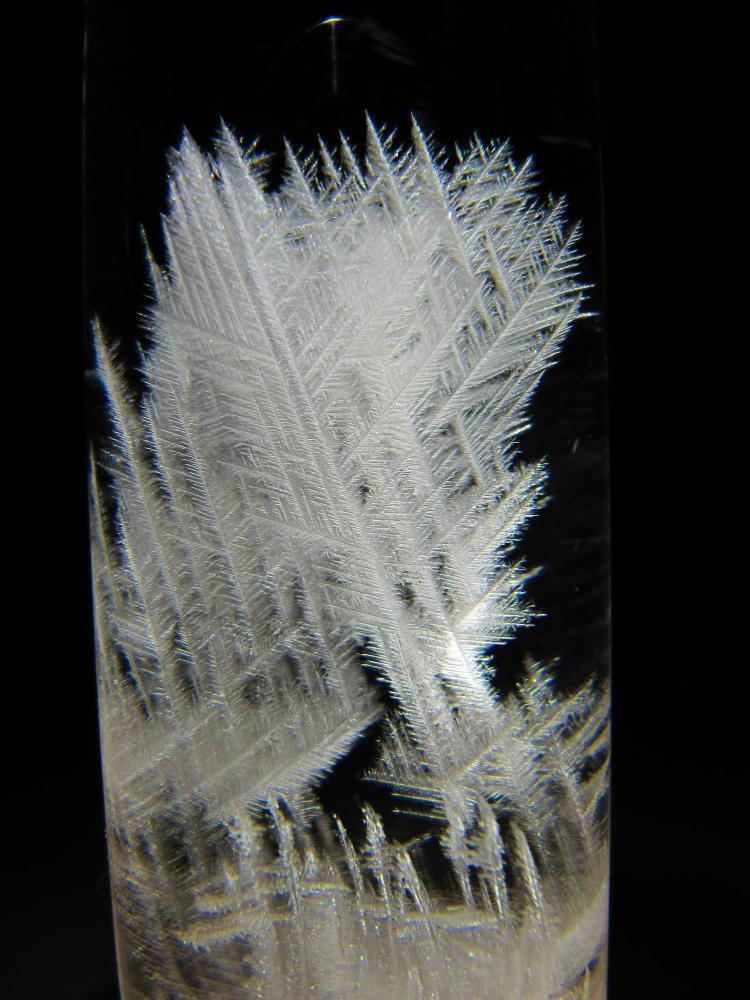 | ||
Description
The liquid within the glass is a mixture of several ingredients, most commonly distilled water, ethanol, potassium nitrate, ammonium chloride, and camphor. This specific mixture was developed by Admiral Robert FitzRoy and used on HMS Beagle.
Contents
During the historic voyage, FitzRoy carefully documented how the storm glass would predict the weather:
In 1859, violent storms struck the British Isles. In response, the British Crown distributed storm glasses, then known as "FitzRoy's storm barometers," to many small fishing communities around the British Isles that were to be consulted by ships at port before setting sail.
Ingredients
The potassium nitrate and ammonium chloride are dissolved in warm water and the ethanol and camphor are then added. The resulting solution is placed in a glass container and sealed.
Accuracy
An article in the Journal of Crystal Growth concluded that temperature change is the sole cause of crystal growth in storm glasses.
Cecil Adams performed informal experiments with a storm glass and found that the success of prediction was no better than random chance.
